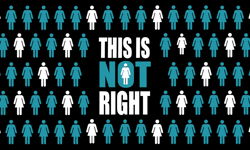Each year the global professional services firm, Deloitte, produces a series of predictions for the next twelve months in the media, technology and telecoms sectors. These predictions are by definition focused on the short-term. They highlight key trends that will impact businesses in 2010 and beyond, and provide thought, context and ideas on how to approach subjects that should already be on the agenda in boardrooms across the sector.
Most of Deloitte’s predictions for the media sector in 2010 are focused on the consequences of technological change — particularly digitization — and are shaped by the economic outlook. They address a wide range of topics, including online advertising, eBooks, business models for recorded music, demand for on-demand media, integration of television and the web, the relevance of the vending machine in a digital world, and the short-term prospects for 3D television. This article addresses the first of these predictions – online advertising.
But first, a small caveat. All predictions for the media sector in 2010 are shaped by the global economic climate. If there was one advantage to making predictions for 2009, it was within a consensus view that most major economies were expected to fall into recession. In 2010, the picture is more mixed. While it is generally agreed that most economies should recover, there do not appear to be enough shapes or letters available to describe the possible permutations that recovery may take — will it be a U, a V, a W, or a square-root recovery? And a double-dip recession is still possible once the stimulus ends. At the time of writing, governments appeared bullish, corporations bearish, and economists divergent.
The shift to online advertising: more selective, but the trend continues
In the heady days prior to the recession, there was a common belief that online share of advertising spend would continue to grow no matter what. Recent quarters have, of course, provided some sobering data to balance this. Globally, year-on-year online advertising revenues fell in each of the first three quarters of 2009. However, two important qualifiers are necessary. First, although online fell roughly 5%, this was still a much smaller decline than almost any other advertising category. In other words, even though online growth was negative, it continued to gain share. Second, although the overall online figure was negative, that weakness was to some extent shaped by the mix of categories within online advertising. Banner ads, for example, were very weak while search and video both grew. For the first three quarters of 2009, search actually grew by almost 7%, meaning its relative growth rate versus traditional advertising spending widened, even during the recession. There is a possibility that the recession has not slowed the growth of online share, but accelerated it.
As the global economies emerge from the crisis, most analysts expect advertising spending to grow by about 2% in 2010, albeit from severely depressed levels. However, our discussions with advertisers, ad agencies and traditional media indicate that many advertising buyers continue to believe that online spending offers “more bang for the buck.” They also claim that online is currently too small a portion of their spending, and that it is the only solution that allows advertisers to measure the effectiveness of their spending. Far from peaking at 10% share, some advertisers think that the gains in online seen in the past five years will in fact gather speed in the next five.
Deloitte is therefore predicting that, in 2010, online advertising spending will not only grow in absolute terms but is also likely to grow substantially faster than the total advertising market, and continue to gain share. Not all online ad categories will participate equally — display is likely to underperform — but the broad category will likely see its global share grow from roughly 10% at the end of 2009 to 15% by the end of 2011.
The categories of online that are likely to experience the greatest growth remain search, social networks, and cost per action (CPA). Any category of advertising that allows for measurement of spending effectiveness is likely to be relatively successful – although more clarity on measurement and effectiveness standards continues to be a key issue for the industry as a whole, from advertisers through agencies to media companies and the technology providers supporting them.
The threat of major disruption
If online advertising continues to gain share in 2010 and beyond, then the bottom line for the media and advertising industry will be straightforward: the process of refining what works and what does not that has been going on for a decade will continue: a gradual process of trial and error. But there is another possibility. The media and advertising industry may be about to undergo “innovative disruption”. If online advertising turns out to be a disruptive technology, then there are two likely consequences, according to the theory of innovative disruption.
First, the disrupting technology begins to take market share from the existing players — in some cases more than 90% — as digital has in the photography market. Second, even when market share is low, the disruptive technology lowers prices, and causes the size of the market to shrink. This deflationary effect is partially offset by elasticity of demand (as prices drop, buyers buy more), but usually the market can shrink in value for years. Recorded music would be an example: sales have dropped every year since 2000, and have fallen by almost 50% in that time.
Should online advertising have this effect on the traditional advertising model, industry players would need to plan for a possibly sharp and permanent reduction in revenues and margins. Online represented roughly 10% of the $600 billion global advertising market in 2009, and in a disruption scenario could see its share climb over 50%, while also causing ad rates to fall and the market to contract.
In that case, the entire advertising and ad-supported ecosystem would need to consolidate, control costs more aggressively, and seek new business models. Indeed in this scenario cost control would, while eminently sensible, only act as a way to slow decline until new business models could be identified and developed by media players.
Traditional media companies may, therefore, need to explore strategies that will allow them to bridge a period of continuing losses in advertising market share. Absolute revenues may increase, depending on the strength of the global recovery, but business decisions predicated on a return to the “old normal” might not be optimal. Cost growth should be restrained in case EBITDA margins are further compressed. These companies also need to embark on a two-track strategy. First, they need to develop an earnings-positive online platform that supports their traditional business. Second, they need to rapidly embrace tools, technology, and a new business model that matches the perceived advantages of online, specifically the measurement of advertising effectiveness and delivery of value for cash spent.
Those who create advertising are also likely to be affected. Developing a £40 million ad campaign is usually about four times as profitable as a £10 million campaign. But, in this new world, if a £10 million campaign can be measured as producing equivalent results to a much larger spend, then the ad agency should be paid as much money as before. More in fact — since they just saved the ad buyer £30 million. In a world where advertising budgets could undergo innovative disruption, agencies may need to charge on the basis of results, not budgets. This will have a direct knock-on effect for planning and negotiation of media buying, and may force further change in how media companies work with advertisers.
The way the advertising value chain operates is changing, that is a statement of the obvious. The question is whether the rapid growth in share for online will tip the way we work from refinement of existing structures into disruption and the emergence of completely new methods of operation. In 2010 the path the industry will take, by choice or necessity, may become clearer.










